#moth conservation efforts
Explore tagged Tumblr posts
Text
Discovering the Night's Wonders: National Moth Week Celebration

View On WordPress
#biodiversity#Canada#ecosystem health#environmental awareness#George Genereux Urban REgional Park#iNaturalist#insect conservation#insect decline#moth adaptations#moth behavior#moth biology#moth conservation#moth conservation efforts#moth contributions#moth database#moth distributions#moth diversity#moth diversity trends#moth ecology#moth ecosystems#moth eggs#moth enthusiasts#moth environments#moth habitats#moth identification#moth importance#moth interactions#moth larvae#moth lifecycle#moth migrations
0 notes
Text
EXPLICIT CONTENT UNDER CUT, ONLY 18+
writing this and immediately posting it no i refuse to come back to edit this
idk about the rest of yall but that one interaction between hiragi and banjo in chapter 130 snatched me up by my throat. plus hiragi with his hair down??? manga hiragi????? listen. stay with me now.
hiragi just oozes authority. STAY WITH ME. he possessed great leadership skills and commanded respect as a member of bofurin's four kings, and such attributes would draw you to him like a moth to flame even as he ages and consequently graduates from the high school. he exudes a casual dominance that makes your heart flutter, and you can't help but feel your brain go all mushy when he tosses his jacket over your shoulders to protect you from unwanted attention or when he nonchalantly drops to one knee to fix the strap on your sandals because you're wearing a dress or short skirt or when he offhandedly points out things that he'd like to see you in but "it's cool if you don't like it."
he takes such good care of you, he makes you want to suck him dry on the DAILY simply because you can. he isn't super well-versed in relationships and may be clumsy with certain situations, but he does his best, and you appreciate the effort. you crave his attention in a way that's almost embarrassing if you think about it for too long, but it's not your fault that almost everything he does leaves your skin flushed with heat and a dull ache throbbing between your thighs.
he may be a strong man, but he's not nearly strong enough to stay focused when you seek him out and invade his personal space, tempting him into your grasp with an alluring sparkle in your eyes and a soft plea for his assistance. sometimes, he may be able to resist for a while, but eventually, you'll get your way, even if you have to pull out all the stops to reach that point. the only exceptions are when you're intentionally acting out or there are pressing matters he must attend to, but that's a conversation for a different time. you're his sweet girl, how could he not deliver?
but, if you're going to demand his attention so often, you should be able to take what he gives you, right? it's only fair.
he's very much the type to crowd you against the wall and finger you until you're creaming all over his hand. his presence swallows you up, engulfing you so completely that it's nearly overwhelming; there's nowhere you can turn where he isn't already. the scent of his cologne wafting off his neck is dizzying, and the only thing grounding you is the low sound of his voice as you drift in and out of awareness. his free hand is braced next to your head for leverage, and you can't help but let your head loll weakly against it as you try to conserve enough energy to prevent your wobbly legs from collapsing under you.
you can't even remember how many orgasms he's pulled out of you with his fingers alone, nor do you care. the sticky squelch of his fingers as he curves them to bully your g-spot for the umpteenth time is obscene and makes your thighs tremble. you whine at the onslaught of stimulation and feebly try to rise up on your tiptoes to escape, but his touch simply follows you.
"nuh-uh, you don't get to suddenly decide to run. i'm not done." his voice, verging on a growl, vibrates in his chest. "i was gone for two hours, and i didn't even have time to take my fuckin' jacket off before you were all over me wantin' more. this is what you wanted, right?"
you nod, tongue too cumbersome and uncooperative to speak. you gasp sharply when the heel of his palm grinds against your clit, lidded eyes popping open attentively. "eyes open. answer me, sweetheart." his voice is firm but not unkind, searching for some type of verbal confirmation or denial that you're still with him.
"it . . . is," you can barely thread together the words. "feels s' good, toma . . . one more, pl--ease." your inner thighs are sticky, but you can't tell whether it's sweat or your own slick that's trickling down your skin. "jus' one."
"damn near insatiable," he grumbles, but regardless, his fingers sink back into you without hesitation.
he can't deny you. but, when he feels his cock twitch in his jeans when you lift your head to gaze at him with those hazy, adoring eyes and sweetly ask him for a kiss, he begins to wonder if he's just as bad as you.
#windbreaker x reader#windbreaker smut#hiragi x reader#hiragi smut#toma hiragi x reader#toma hiragi smut#hiragi toma#windbreaker x you#satoru nii
79 notes
·
View notes
Text
Why should YOU!!!!!! care about parasite conservation
This is a question I get alot, esp since I usually ramble quite a bit here about parasites and diseases, well, I got the chance to do a seminar on the topic of parasite conservation but I was under a very small time limit for such an complex topic! I couldn't quite say all I wanted to say. So I am posting it here! I know everyone who follows me is a fellow disease/parasite/rot enthusiast and you do not need me to lecture you on this, but I thought I should put these out anyways, just in case anyone is curious why!
First, we need to understand the concept of viable population, a viable population is a population of a species that can survive for at least 100 years in the wild, this term includes;
Demographical changes A population must survive changes in their demographic, such as when there are more females than males in monogomous species.
Ecological changes A population must survive changes in their ecosystem, such as logging, habitat destruction, ecological islands, etc
Genetic diversity A population with poor genetic diversity is a dead one, genetic influx helps maintain genetical diversity which leads to mutations, those mutations can serve to keep the population resistant against specific diseases.
In shorter words, a viable population is a population that can survive without human intervetion for conservation efforts, this is usually applied to vertebrates, however, we will see that parasites are tied to these pilars, especifically the 3rd one. There are a few reasons why should care about parasite conservation but the most important;
Parasites help manage populations My main character for my seminar was the Ophiocordyceps sinensis fungus, a parasite that preys on the larva of ghost moths. The decrease of the population of O. sinensis led to the growth of these moths which consequently made other insects who competed for resources against those moths have their populations threatned, these moths also ravaged the roots of several trees, many who are considered threatned.
Parasites can change social hierarchies for better or for worse A popular parasite, Toxoplasmosis gondii, can infect wolves making them more aggressive and reckless. These changes often led to them becoming more successful in hunts due to their parasites affecting their risk-assessment part while also helping them climb the social hierarchy of their packs.
On the other side, parasites may weaken an individual, making them vulnerable to other members who are looking to climb the ranks.
Understanding how a parasite work may help us understand how the host works Which is easier to understand, the lock or the key? Chemical analysis of how certain parasites function within their hosts, how they change them, evade their immune system and control them may help us understand how the host works. Parasites keep populations genetically diverse and healthy.
A population that has been isolated from disease for millenia may loose the genes associated with specific resistances, this makes them an unviable population as they are vulnerable to any infection. Parasites and host hold a very intimate and dynamic relationship; the parasite evolves to keep its place inside the host and the host evolves to keep the parasite away, keeping them genetically 'active'
Parasites produce many chemicals important to antibiotic and antinflamattory drugs
Parasites are concerned with two things 1. keeping a monopoly inside your body and 2. not dying! To do this, many will produce chemicals that kill other competing entities but keep themselves alive and others will use antiinflamttory chemicals to calm the immune system down. We are able to harvest/study these chemicals to use them for our benefits
Okay, I get it, they are important to the ecosystem, but why should we protect them?
Parasites are specific to their hosts, protecting them from other parasites.... and US!!!!!
A parasite that evolves to be in one host will occupy that space physically, protecting the host from other generalist parasites. The host, who is used to this parasite, will probably have an history of co-evolution with it and be able to survive most infections. Now, if this parasite goes extinct, there will be an void in their ecological niche... a void that can be filled by other parasites... other parasites that the host is not used to.
But wouldn't that incentivate genetic diversity?
Well, yes! But it would still be an disaster! You are introducing brand new parasites to a species that have never dealt with them before PLUS, parasites do not live in a vaccuum; they compete against other parasites, the best parasites are the ones that reproduce the most, evolve the fastest and spread quickly, you know what kind of parasites are these? viruses, elliminating a specific parasite from a host open the possibility for these other parasites to evolve to be able to fill that niche and consequently, if in close contact, they may get to us. The population of these parasites now grow, their competition dies and now you have a massive growth that you cannot stop.
And, most importantly (to ME!!!!!!!!) Learning conservation and ecology means ditching the whole 'human purpose' aspect, species do not need to serve us to be even allowed to be alive. I wanted to ditch the whole 'well, parasites can help us with infections' part because it doesn't matters, they should be saved for the simple fact that they are living beings that have been here for millions of years and deserve to live as much as any other 'cute species'. I don't care if it's leeches, bacteria, maggots or mosquitoes, they all deserve respect.
The future of parasite conservation is a bit brighter than it was when I started researching this topic, a few conservation institutes of parasites seem to have been dismantled but I've noticed more and more papers being published calling for a larger parasite effort...! And I hope to see some change soon, if it helps you feel better, when I started writing, O. sinensis was considered endangered and today, they are vulnerable :)
#[geiger counter noises]#ive found a few institutions of parasite conservation that ive never seem before. im going to be emailing them askin some questions#and i may come back and post them here! peace!
45 notes
·
View notes
Text
You Encounter Ghost at the gym.
As I stepped into the gym, the atmosphere felt charged with anticipation, and I couldn't shake the feeling of being under scrutiny. All eyes seemed to gravitate towards me, and I couldn't help but wonder if it was because of my attire, perhaps a tad too revealing for the conservative environment of a military base.
Deciding to focus on my workout, I headed straight for the treadmill. With each stride, I felt the tension ease from my muscles, the rhythmic pounding of my feet against the belt a comforting cadence. One minute running, followed by thirty seconds of rest, became my mantra as I settled into a familiar routine.
Half an hour in, I transitioned into a light jog, the steady rhythm lulling me into a state of focus. But just as I found my rhythm, the door creaked open, and my eyes flicked up to see Ghost entering the room. His presence was unmistakable, clad in a black sleeveless hoodie, his face concealed behind the signature skull balaclava.
I averted my gaze, pretending to be engrossed in my workout, but I couldn't ignore the magnetic pull of his presence. Ghost made his way to the bench press, his movements fluid and purposeful. With a sigh, I halted my exercise, climbing down from the treadmill.
As I watched him, my attention was drawn to the intricate tattoo adorning his left arm, a full sleeve that extended from wrist to chest. It was a work of art, complementing the defined muscles and sinewy strength beneath his skin. Despite my best efforts to remain indifferent, I couldn't deny the allure of his imposing figure, a testament to years of dedicated training.
I couldn't help but let out a soft exclamation of surprise as Ghost, to my utter astonishment, peeled off his sleeveless hoodie with deliberate intent. His actions seemed calculated, almost as if he knew the effect they would have on me.
"Steaming Jesus," I muttered under my breath, unable to tear my eyes away from the sight before me. His well-defined abs rippled beneath the sheen of sweat, drawing my gaze like a moth to a flame. The V-shape leading down into his sweatpants only added to the magnetic pull, igniting a fire within me that I struggled to contain.
Despite my usual indifference to shirtless men, Ghost's undeniable allure made him an exception to the rule. His presence commanded attention, his sculpted physique a testament to his dedication and discipline.
Desperate to divert my attention from his magnetic pull, I immersed myself in barbell squats, the repetitive motion a welcome distraction. But as I glanced up at the large mirror in front of me, I couldn't escape the reflection of Ghost's gaze. His eyes bore into mine, a silent exchange of heat and tension that sent shivers down my spine.
As if unable to resist the temptation, Ghost began to toy with the barbells, his movements deliberate and mesmerizing. With each repetition, his eyes wandered, stealing glances at my figure with an intensity that left me breathless. Despite my efforts to remain focused on my workout, the electric current of his gaze sent a thrill coursing through me, igniting a fire that burned brighter with each stolen glance.
Feeling the intensity of Ghost's unwavering gaze, I could feel a flush of heat creeping up my neck, mingling with the sweat that glistened on my skin. Despite the cool air of the gym, I was consumed by a wave of heat that seemed to radiate from within.
With every moment spent under his watchful eyes, the air grew thicker, the tension palpable. Unable to withstand the overwhelming heat and the magnetic pull of Ghost's presence any longer, I made a swift decision to leave the gym behind.
Slipping away from the weight of his gaze, I hastily gathered my belongings, the need for cool air and solitude driving me onwards. With each step towards the exit, I felt the weight of his gaze lifting, replaced by the promise of relief awaiting me outside.
As I stepped into the fresh air, a sense of liberation washed over me, the cool breeze a welcome respite from the stifling atmosphere of the gym. With a determined stride, I made my way back to my room, the anticipation of a refreshing shower and a hearty breakfast urging me forward.
I slipped into the comforting embrace of my sweatshirt and sweatpants, the familiar coziness enveloped me like a comforting embrace. Locking the door behind me, I made my way towards the staircase, each step a deliberate movement towards the next phase of my day.
But as I descended the stairs, my path intersected with Ghost's, his presence looming before me like an unavoidable obstacle. Our eyes met in an electric exchange, a silent acknowledgment of the tension that simmered between us.
He was standing on the edge of the stairs, his eyes glued on me.
My eyes traced his biceps and his arm with that familier tattoo of him.
It was difficult for me to climb down having him just standing there in a gazing contest.
I mustered my courage and finally started going down the stairs.
Someday I will come to know about this tattoo and what does it mean to him.
The thoughts raced my mind.
With a steady resolve, I brushed past him, our shoulders grazing in a fleeting touch that sent a jolt of electricity coursing through my veins. Despite the intensity of the moment, I remained outwardly composed, refusing to let the undercurrent of attraction disrupt my equilibrium.
As Ghost disappeared from view, retreating to his own domain, I continued on my way, a sense of calm settling over me. Interactions with him were inevitable, a fact of life in this shared space we called home.
#cod ghost#ghost call of duty#ghost cod#modern warfare#modern warfare 2#simon ghost riley#simon riley#call of duty
26 notes
·
View notes
Text
Desert Rain Frog

We've all probably seen the video now of the chubby and cute frog that looks angry squeaking loudly for the camera as if he's defending his turf, well that frog in question is called the Desert Rain Frog and they are natives to the African continent, more specifically South Africa and Namibia. These cute and angry looking fellas can live up for 14 years and are considered "Near Threatened" in terms of conservation efforts.
Desert Rain Frogs are nocturnal, meaning they are more active during the night time than during the day, and consist on a diet of moths, beetles, and insect larva. Their life cycle is also rather interesting. Due to living in desert environments they actually completely skip the tadpole stage of the usual frog life cycle, and instead when their eggs hatch they instead come out as froglets that are completely independent and begin hunting on their own fairly quickly. Their eggs dont have the shell like you or I would expect, instead they are covered in a thick mucus that prevents the eggs from drying out. A neat adaptation to survive in their environment!
Due to their very plump body they are unable to hop or jump for moving around, instead they walk and waddle on the sand; leaving little froggy footprints in the process. This sadly does make it difficult for them to avoid predators; but I'm sure thats why the decided to become nocturnal. They also share a trait with Glass Frogs in that the underside of their bodies is clear, allowing people to see their internal organs. Scientists theorize that this is used to aide them when they are hiding from predators.
================================================
Again I want to apologize for missing my frog fact yesterday, it was a hectic day and I'll be posting a second bonus fact today sometime later this afternoon; once I come home from Jury Duty and have had a chance to settle in and relax. Till then, keep on keeping on and remember to always be kind to others and treat people how you wish to be treated.
Much Love, Frog Druid
7 notes
·
View notes
Photo
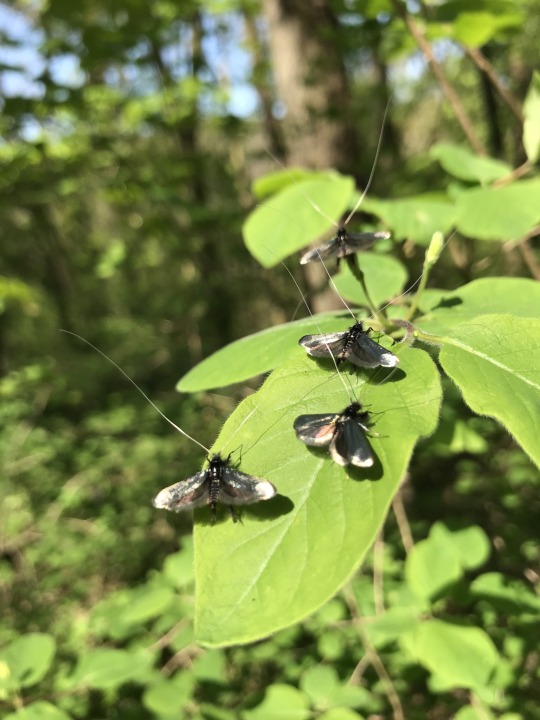
Green Longhorn Moth (Adela reaumurella)
Family: Fairy Moth Family (Adelidae)
IUCN Conservation Status: Unassessed
Common and widely distributed across temperate regions of northern Africa, Asia and Europe, Green Longhorn Moths are easily distinguished from any other moth species owing to their iridescent, metallic-looking wings and the extremely long antennae seen in males (potentially growing to be three times the length of the body,) which are believed to aid in finding mates through the detection of pheromones that indicate reproductive maturity. Found mainly in forests but also occasionally spotted in open grasslands, adult Green Longhorn Moths are unusual among moths in that they are active during the day, with males gathering in large swarms of up to 30 individuals on sunny days between April and June and awaiting the arrival of females, which can be distinguished from males due to their drastically shorter antennae. When a female passes by a swarm all of the males within it will take flight in an effort to impress and mate with her, and following successful mating (which takes place while still in flight) a female will lay her eggs among leaf litter on the forest floor. The caterpillars of this species live among the leaf litter they were born on, feeding on dead leaves and other forms of fallen vegetation while relying on a protective bag-like casing carried on their backs (made from leaf litter held together with silk) to both conceal them and protect them when confronted by predators. Caterpillars that survive until the late summer will seal the end of their bag in order to form a cocoon within which they will pupate over the winter, emerging in the following spring as winged, mature adults.
--------------------------------------------------------------------------
Image Source: https://www.inaturalist.org/taxa/56203-Adela-reaumurella
#green longhorn moth#longhorn moth#fairy moth#moth#moths#insect#insects#zoology#biology#entomology#lepidopterology#lepidoptera#wildlife#african wildlife#european wildlife#asian wildlife#tw insect#tw insects#animal#animals
138 notes
·
View notes
Text
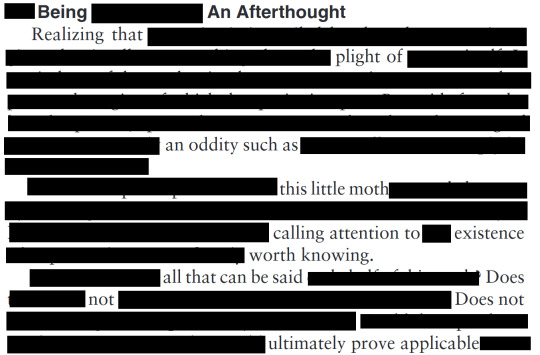
being an afterthought: an erasure poem of a caterpillar that eats tortoise shells by deyrup, deyrup, eisner and eisner (linked here) (original text under the cut), sby march 2024
[Text: Being An Afterthought Realizing that plight of an oddity such as this little moth calling attention to existence worth knowing Does not Does not ultimately prove applicable]
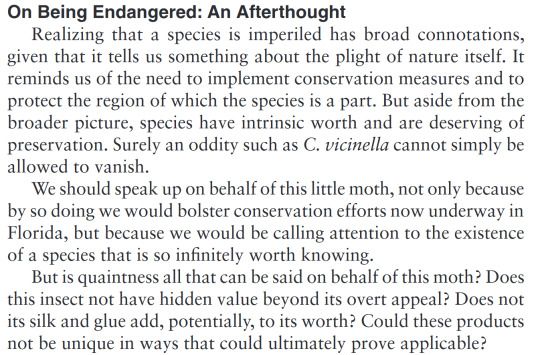
[Text: On Being Endangered: An Afterthought Realizing that a species is imperiled has broad connotations, given that it tells us something about the plight of nature itself. It reminds us of the need to implement conservation measures and to protect the region of which the species is a part. But aside from the broader picture, species have intrinsic worth and are deserving of preservation. Surely an oddity such as C. vicinella cannot simply be allowed to vanish. We should speak up on behalf of this little moth, not only because by so doing we would bolster conservation efforts now underway in Florida, but because we would be calling attention to the existence of a species that is so infinitely worth knowing. But is quaintness all that can be said on behalf of this moth? Does this insect not have hidden value beyond its overt appeal? Does not its silk and glue add, potentially, to its worth? Could these products not be unique in ways that could ultimately prove applicable?]
excerpt originally seen in a post by @great-and-small! linked here
#writeblr#erasure poetry#blackout poetry#poets on tumblr#<- tag spam#saw this screenshot in a post earlier by great-and-small#and it enamored itself to me
17 notes
·
View notes
Text
Moths in the Calgary Area








After attending a lecture at Fish Creek on citizen science, trail cameras and habitat connectivity, i realized that there is a knowledge gap (to my knowledge) in how fragmented habitats are used or usable by insects (and plants). The corridors between habitat may not provide the correct conditions to allow these organisms to connect disparate populations.
For moths, the difficulty of locating habitat through sprawling mazes of lights and "deserts" that are areas of high mortality, poor food availability, and poor cover is difficult to overstate- especially when no concerted effort seems to be dedicated to moth conservation- it doesn't exactly instill hope for the diversity and abundance of Lepidoptera in the future.
I managed to find that surprisingly small habitat fragments of a few hectares to still be able to be used by the red underwings and occasionally of the white underwing, along with a few other species of medium-small moths. A spot called Makowecki Hill- a patch of naturalized vegetation only 9,000 square meters, sandwiched between an apartment complex, suburbia, and university drive- had this underwing moth attracted to the bait on an Elm trunk.

There were also habitats of considerable size that had extremely poor diversity or abundance of moths. The Karl Baker Offleash Dog Park is 90,000 square meters, yet it had very few moths (this site is only a few hundred meters from Makowecki hill) It could have been an unlucky night- astrological explanations were not fully explored. Both of these sites may be close enough to the University Heights area to be traversable to moths, but these may be population sinks from larger habitat fragments:
*In Ecology, a population sink is a habitat fragment that attracts a species as habitat but is inadequate to support a population - they go there to die.
Protect the habitat and you protect the moth. Many many species feed on the leaves of poplar and aspen- these are the most important trees. Turn off the lights! Lights distract moths and they can become fatigued, dehydrated, disoriented, trapped, or preyed upon. Turning lights out is a win-win because you'll save electricity. Some individuals who are divorced from the consequences of their actions own bug zappers and leave them on 24 hours a day (at least one property bordering Karl Baker has this), regardless of whether they are outside or not, with the excuse that they might end up hopefully killing a mosquito. It is like the worst kind of bottom trawling - 90% bycatch. Ecocide. Don't do it.

The bait recipe i used has been specifically said to attract underwing moths, one of the larger kind of moths that actually have a proboscis as an adult. It is a mixture of molasses, bad banana, brown sugar, cheap beer, and rum, slowly heated to a paste on the stove, and spread on the trunks of trees at chest height at dusk.
Pictured here - two "red" underwing moths, in the genus Catocala.
I was typically baiting in late summer to find underwing moths, so there is a sampling bias here- these moths are those that fly at chest height, and are attracted to fermenting sugar, and fly in July to August between 10 pm and 1 am. I think I'm going to specifically record my observations with dates and locations, and to try and identify each moth that shows up, and perhaps to consistently visit the same sites to create a moving image through the season of who is around.

The large "black witch" moth- Ascalapha odorata, with a wingspan up to 150 mm, is the species with the largest wingspan to make it's way to Alberta (behind it is an underwing moth with a wingspan of around 55 mm). This individual came to my bait site in a campground outside of the city in July. These moths migrate further than the monarch butterfly and can be found throughout Central America during the winter months.
Another site on the western edge of the Ambrose University campus was home to a large number of underwing moths. This spot was approximately a 70,000 square meter patch of aspen forest. It was demolished in 2022 to make way for a Vibrant Community (TM) of luxury townhouses. Something to keep in mind is that if you destroy the habitat, you are sentencing the creatures that live there to death. If you were born after 1990, you can think of the habitat as squares on the map in an RPG where a random battle occur when you walk through. Remove those squares that spawn enemies, and you cannot encounter them anymore. The forest is now fragmented into an 8,500 square meter patch on the south end and a 4,000 square meter patch to the north.

(Above) Here we have a graduate student applying the bait to the trunk of an aspen tree. Ambrose students used to be able to do population ecology experiments back here, or commune with nature between classes.


Above: The white underwing seems to be less common than those with red hindwings and dark grey forewings.
There is a sort of spiritual atmosphere surrounding encounters of large moths in their habitat at night- like the feeling of fairies coming out of the woodwork. In the inky blackness, you can hear the buzz of their wings and see them zip around like shadowy spheres. They are alert and agile.
No longer can we encounter these moths near Ambrose circle, despite the bleeding hearts whining to faculty- instead we are blessed with another Vibrant Community (TM) of luxury townhouses.
I want to raise awareness about what is being lost, hopefully to help prevent this.

3 notes
·
View notes
Text
4: Art and Interpretation
My stick figures are abysmal, and birds (metaphorically) die when I sing. I am not the right person to capture lush ecosystems with paint or compose a song about school children who died in cold water. But I am a storyteller and creative writer, and I can interpret nature through that art form.

Environmental advocacy zine making workshop I hosted at my summer job
I am particularly inspired by our textbook’s suggestion that nature interpreters engage their audiences through drama performances. As a community theatre volunteer and improv performer, the idea of adding an additional dimension of interpretation to this excites me. My Bachelor of Arts and Science minors are in ecology and creative writing, and bringing those subjects together through nature interpretation is a logical progression.
The first person that comes to mind when I think of writing and nature interpretation is Rachel Carson. While she is best known for her book Silent Spring, I think it would best be described as science communication. However, her essay Helping Your Child to Wonder provides an excellent description of the ways nature interpretation can benefit both the interpreter and their audience (in this case, her 4-year-old nephew). Particularly, she discusses how beauty can lead to curiosity.
She writes
“Once the emotions have been aroused— a sense of the beautiful, the excitement of the new and the unknown, a feeling of sympathy, pity, admiration or love— then we wish for knowledge about the object of our emotional repose. Once found, it has lasting meaning”
I think reading this piece inspired and influenced how I interpret the “gift of beauty.” Beauty has an emotional impact on us, one that can sustain itself for far longer than memorizing a few facts. Beauty makes us care.
There are so many ways to find beauty in nature. Things that might seem ugly or odd at first can reveal themselves to have startling quirks and charms if you take the time to know them. Take, for example, Ceratophaga vicinella, which is a rare species of moth endemic to Florida.
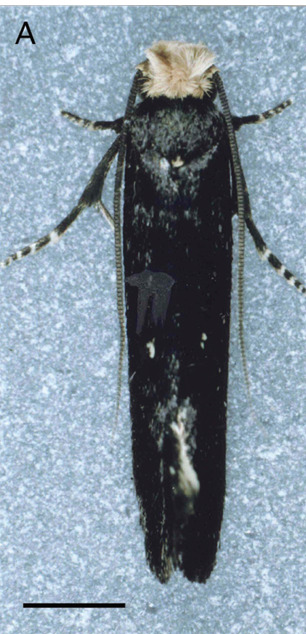
Source: Deyrup et al., 2005
They feed on dead gopher tortoise shells as larvae and are in decline alongside those tortoises. They are overlooked by most people but have immense beauty to those who take the time to study them.
“Surely an oddity such as C. vicinella cannot simply be allowed to vanish. We should speak up on behalf of this little moth, not only because by so doing we would bolster conservation efforts now underway in Florida, but because we would be calling attention to the existence of a species that is so infinitely worth knowing” write the authors of a paper published on the moths in 2005.
The gift of beauty allows us to appreciate the aspects of nature that are so “infinitely worth knowing.” It gives us incentive to learn about, care for, and appreciate the more-than-human world around us.
Sources:
https://rachelcarsoncouncil.org/wp-content/uploads/2019/08/whc_rc_sow_web.pdf
Deyrup, M., Deyrup, N. D., Eisner, M., & Eisner, T. (2005). A caterpillar that eats tortoise shells. American Entomologist, 51(4), 245–248. https://doi.org/10.1093/ae/51.4.245
2 notes
·
View notes
Text
Pride Month Day 30
•~•~•~•~•~•~•~•~•~•~•
Welp, the month is over but the time for celebration is not because supporting LGBTQ+ is for every day of the year :) be gay do crimes
•~•~•~•~•~•~•~•~•~•~•

This is Kyoku, she's a lesbian librarian
She likes books, quiet, tea, cozy reading spots, her girlfriend Sun Dancer, soft blankets, winter
She hates loud ponies, ponies who don't respect personal space, ponies who don't return their books, sweating

This is Sun Dancer, she's a bisexual weather pony
She likes napping, flying, the beach, sunbathing, her girlfriend Kyoku, summer, dancing, her sister Summer Peach
She hates the cold, being sick, uncomfy beds, weather that can't be controlled, not being the best

This is Bubblegum, she's a pansexual bubblegum maker
She likes bubblegum, bubblegum flavored things, chewing gum, blowing bubbles, curly hair, long socks, her girlfriend Summer Peach, spring
She hates getting gum stuck in her hair, things not bubblegum flavored that really should be, socks that don't stay up, being told to "grow up"

This is Summer Peach, she's a neptunic surfer
She likes the ocean, ocean related things, studying sea creatures, surfing, her girlfriend Bubblegum, vacations to the beach, dolphins, pearls, fruit, her sister Sun Dancer
She hates when she's not at the beach, vegetables, when her surfboard breaks, being told to "get a real job"
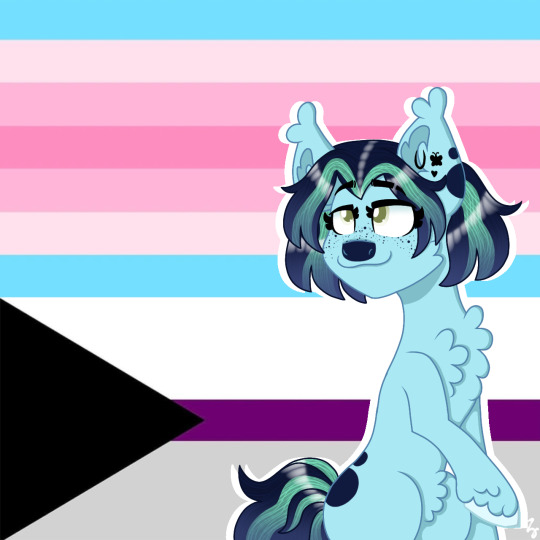
This is Flutterina, she's a transfemme demisexual lepidopterist
She likes butterflies, moths, studying, water, getting high and looking at butterfly videos, her girlfriend Ruby Riddle, butterfly conservation efforts
She hates ponies who hate butterflies, running out of weed "fuel", ponies who act smart but are actually dumb
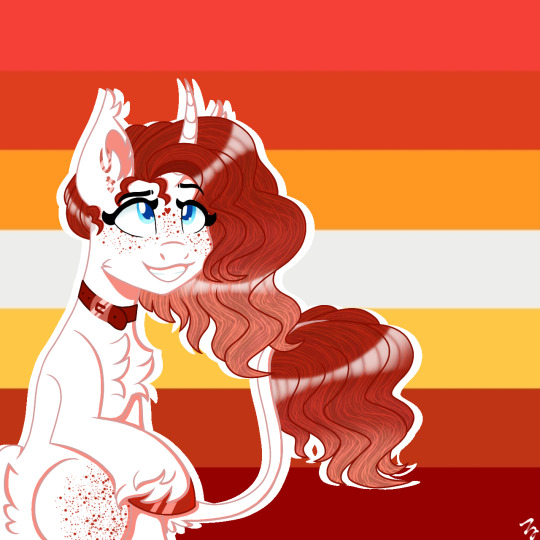
This is Ruby Riddle, she's a sun lesbian detective
She likes puzzles, riddles, clues, being fashionable, high society, solving crimes, her girlfriend Flutterina, receiving compliments
She hates puzzles she can't solve, cases going cold, wearing something tacky or out of season, things that are sticky, being insulted

This is Ayano, they're a nonbinary omnisexual astrologist
They like space, aliens, galaxy-inspired things, talking about space related stuff, the moon, their partner Kuro, cold weather with hot chocolate
They hate ponies who don't believe in aliens, not being able to fly to space themself, bugs

This is Kuro, he is a transmasc bisexual demiboy important wizard sorcerer
He likes studying magic, practicing magic, getting magic lessons from Sunburst, looking up to his heroes, his partner Ayano, his cape
They hate spells that are hard to perform, disappointing their heroes, itchy sweaters, not wearing their cape
•~•~•~•~•~•~•~•~•~•~•
Happy Pride Month Everyone! <3
•~•~•~•~•~•~•~•~•~•~•
#my little pony#mlp art#mlp friendship is magic#my art#my oc art#my ocs#lesbian#bisexual#pansexual#neptunic#transgender#transfemme#demisexual#sun lesbian#nonbinary#omnisexual#transmasc#demiboy#happy pride 🌈#lgbtq
8 notes
·
View notes
Text
Preserving Diversity
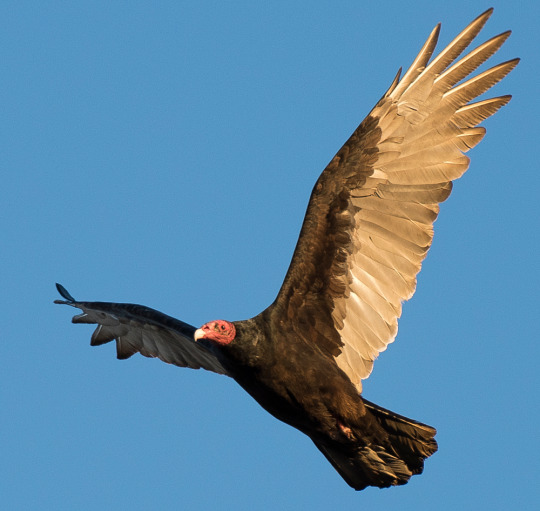
View On WordPress
#adaptation#afforestation areas#american elm#American white pelican#animals#Biodiversity Conservation#Biodiversity Day#biodiversity loss#Celery Looper Moth#Citizen Science#Community Engagement#Community Involvement#conservation#conservation achievements#conservation action#conservation activism#Conservation Advocacy#conservation benefits#conservation challenges#conservation education#Conservation Efforts#conservation impact#conservation importance#conservation initiatives#conservation management#conservation measures#conservation planning#Conservation Practices#conservation programs#conservation projects
0 notes
Text
Saving moths may be just as important as saving the bees
University of Sheffield news release:
Night-time pollinators such as moths may visit just as many plants as bees, and should also be the focus of conservation and protection efforts, a new study from the University of Sheffield suggests. The study found that moths under pressure from urbanisation may also be less resilient than bees, due to their more complex life cycle and more specific plant requirements. It also revealed that despite this threat, moths play a crucial role in supporting urban plant communities, accounting for a third of all pollination in flowering plants, crops and trees.
Was this written by a moth
2 notes
·
View notes
Text
LOUDER FOR THE NON-VEGANS WHO STILL DON'T GET IT:
Most vegans don't use agave in place of honey!! Most vegans are completely aware of the ethics surrounding their food production (which is why they're vegan...) and will opt for other sugary syrups if it's really needed, especially if they live in an area where they know agave does not naturally grow there.
For example: I am a vegan living in the US, and if I am in the mood for a sugary syrup, I will buy maple syrup that was harvested in Vermont; therefore, am avoiding the use of both agave and honey while also buying from a US based company that used maple trees that are native to the country I live in. Or, I will make my own simple syrup using raw cane sugar that was grown and harvested in Florida. Sometimes, just for shits and giggles, I'll take it a step further and will purchase sorghum molasses at a local farmer's market—a sugary syrup produced by a type of sugar cane that is native to the state I live in.
Most agave production is for TEQUILA!! Something that is consumed by MORE NON-VEGANS than VEGANS! (because there are more non-vegans than there are vegans, I know...shocking info) But nobody would ever go up to someone at a bar and tell them they're awful for drinking a margarita.
Beekeeping European honey bees actually wipes out native pollinator populations such as carpenter bees, squash bees, blueberry bees, wasps, flies, beetles, butterflies, moths, etc. because the increase in this population of bees essentially reduces chances of other pollinators finding food. If there are more European honey bees out there eating up all the nectar, that makes LESS nectar for the other non-honey bee pollinators.
Plus, also, if you live anywhere other than Europe...European honey bees ARE NOT native pollinators to your area.
The best thing you could do is NOT blame all of this on vegans; but rather, stop consuming so much tequila and plant a garden of native grasses and flowers that would allow native pollinators in your area to thrive. Support local conservation efforts for NATIVE pollinators.
Maybe also look into other sources of sugary syrups if you really need it that badly. There is dandelion syrup, wildflower syrup, maple syrup, sorghum, syrup made from apples or pears, simple syrup, and so on and so forth. It makes zero sense why y'all think honey or agave are the ONLY two options you have when it comes to sweeteners.
Vegans of tumblr, listen up. Harvesting agave in the quantities required so you dont have to eat honey is killing mexican long-nosed bats. They feed off the nectar and pollinate the plants. They need the agave. You want to help the environment? Go back to honey. Your liver and thyroid will thank you, as well. Agave is 90% fructose, which can cause a host of issues. Bye.
#vegan rant#please use critical thinking skills for longer than two seconds#european honeybees wipe out native pollinators#buying honey is not going to save the bats who rely on agave#but not buying tequila will#vegan
252K notes
·
View notes
Text
(Speech on the American chestnut tree that I rushed last night for class.)
The Christmas Song is a classic Christmas tune written by Robert Wells and Mel Tormé, better known by its first line “Chestnuts roasting on an open fire”. It’s safe to say that most Americans nowadays have never experienced roasting American chestnuts over an open fire, but that wasn’t always the case. Before the 20th century, the American chestnut tree’s population was numbering nearly four billion, making up 25% of the trees in eastern America range, there was not only an economic but also ecological dependency on the species. Sadly, a blight or pathogenic fungus essentially wiped them all out by 1950, devastating multiple species and the economy of Appalachia, and it’s surrounding areas. The American people should care about the revival of this species, as well as understanding how it happened and it’s effects. There are many reasons as to why they should care, understanding how it happened makes it less likely to occur in the future, knowing its effects gives a better grasp on how devastating the event was, and becoming aware of revival efforts furthers support.
First and foremost, how did the American chestnut tree end up functionally extinct as a prominent lumber and nut tree of the eastern US? The chestnut blight or Cryphonectria parasitica was not a native pathogen to the United States, in fact it came from Asia. In Asia, the chestnut blight was nothing more than a miniscule parasite, an unnoticeable inconvenience due to the natural immunity of the Asian chestnut. Unbeknownst to commercial breeders importing Asian chestnuts, the American chestnut did not have that immunity and very quickly that small pest bulldozed its way throughout the chestnuts natural range. According to the USDA, the blight spread at a rate of 24 miles per year, effectively eradicating the American chestnut by the 50s. So basically, American commercial breeders imported infected Asian chestnut trees, which in turn completely decimated the population of the American chestnut tree within 46 years.
On top of that, the functional extinction of the American chestnut did not come without ecological consequences. Many animals and plants relied on the American chestnut, whether it be for food, shelter, or seed dispersal. Starting at the extreme effect of the blight, was the co-extinction event of at least two species of American chestnut moths; according to the International Union for the Conservation of Nature this was due to the chestnut being their only form of sustenance. It also contributed heavily to the extinctions of the passenger pigeon. But on a less major note but still as devastating, the American chestnut was the primary food source for other animals, causing cataclysmic decline in the populations of rodents, detritivore insects, squirrels, bear, deer, and turkeys. The havoc did not end there however, it traveled throughout the food chain, animals who relied on the affected species were at a loss for how to find prey, in turn falling in numbers.
More directly, it affected the citizens of the eastern United States. Beginning with Native Americans, they used the American chestnut as a food, medicine, fire-starters, woodworking, and many other ways unique to their tribes. Then the farmers would use the chestnut to fatten hogs up for slaughter and auctioning, and would use tannins from the bark for leather. The eradication of the American chestnut tree had a devastating effect on the people of the eastern US.
Finally, why is it even important to support the revival of the American chestnut? Ecologically, it would benefit many species left fending for themselves after the blight, restoring numbers in their population, and add vital nutrients to the soil that’d benefit plant life. Economically, the reintroduction of the American chestnuts prized timber would aid construction and furniture building as an industry. And lastly, it would have a large cultural significance for the people of Appalachia, especially the Native Americans who built a close relationship with the American chestnut up until it’s functional extinction decades ago.
#had to word it weird to fit the requirements#american chestnut tree#american chestnut#speech#writing#chestnut#eastern us#appalachia#american#american ecology#eastern america#ceruleanmoonjellies
1 note
·
View note
Text
[Image caption: an excerpt titled "On Being Endangered: An Afterthought". It reads as follows.]
Realizing that a species is imperiled has broad connotations, given that it tells us something about the plight of nature itself. It reminds us of the need to implement conservation measures and to protect the region of which the species is a part. But aside from the broader picture, species have intrinsic worth and are deserving of preservation. Surely an oddity such as C. vicinella cannot simply be allowed to vanish.
We should speak up on behalf of this little moth, not only because by doing so we would bolster conservation efforts now underway in Florida, but because we would be calling attention to the existence of a species that is so infinitely worth knowing. [bold is highlighted]
But is quaintness all that can be said on behalf of this moth? Does this insect not have hidden value beyond its overt appeal? Does not its silk and glue add, potentially, to its worth? Could these products not be unique in ways that could ultimately prove applicable?
[End caption.]
Saddest thing ever is reading an academic paper about a threatened or declining species where you can tell the author is really trying to come up with ways the animal could hypothetically be useful to humans in a desperate attempt to get someone to care. Nobody gives a shit about the animals that “don’t affect” us and it seriously breaks my heart
#wow that is really sad#''if you won't care for this moth otherwise at least give it a chance to be useful!''#and whoever wrote that isn't being cynical but is desperate#endangered species#conservation#ecology#environment
172K notes
·
View notes
Text
Desert Forest: Life with Joshua Trees. (Lancaster Museum of Art and History)
The Museum is presenting an exhibit entitled, "PST ART: Art & Science Collide," centered around a book entitled, "Desert Forest: Life with Joshua Trees." I know several of the contributors to the book (and just ordered my hard copy version). Here's the story about the exhibit from the Museum:
The Lancaster Museum of Art and History (MOAH) has partnered with the Getty, and 70+ other organizations, for PST ART: Art & Science Collide. On Saturday, September 7, the Lancaster Museum of Art and History will open Desert Forest: Life with Joshua Trees, as part of the Getty PST ART: Art & Science Collide initiative. The exhibition sheds light on the threatened Joshua tree and the fragile Mojave Desert ecosystem that sustains it. The project integrates natural history, indigenous knowledge, public policy, scientific research, and artistic expressions to emphasize the challenges facing the Joshua tree and conservation efforts. With a focus on the impact of climate change, development, wildfires, and other threats, the exhibition explores the symbiotic relationships between Joshua trees, soil fungi, and moth pollinators, engaging a diverse audience interested in arts and environmental issues. Desert Forest features more than 50 historical and contemporary artists who have produced artworks that exemplify a range of ideas across myriad practices. The exhibition will remain on view from Saturday, September 7, 2024 to Sunday, December 29, 2024.
The book:

Desert Forest: Life with Joshua Trees is a collection of essays and imagery that illuminates our deeply entangled relationships with the Joshua tree. Leading scientists, artists, indigenous culture bearers, historians, conservationists, policy makers, and creative writers, share their multidisciplinary research to spotlight the Joshua tree in response to the growing threat of climate change and the explosion of development across Mojave Desert lands. Following the trails of beneficial plant kinships as well as the damage done by ongoing extractions, they share desert cosmologies through this unique icon—all while bringing us closer to the being that is Joshua tree. This book is for everyone concerned about the unfolding impacts of human actions in the natural world and how we can find better ways of living together through acts of care and repair.
1 note
·
View note